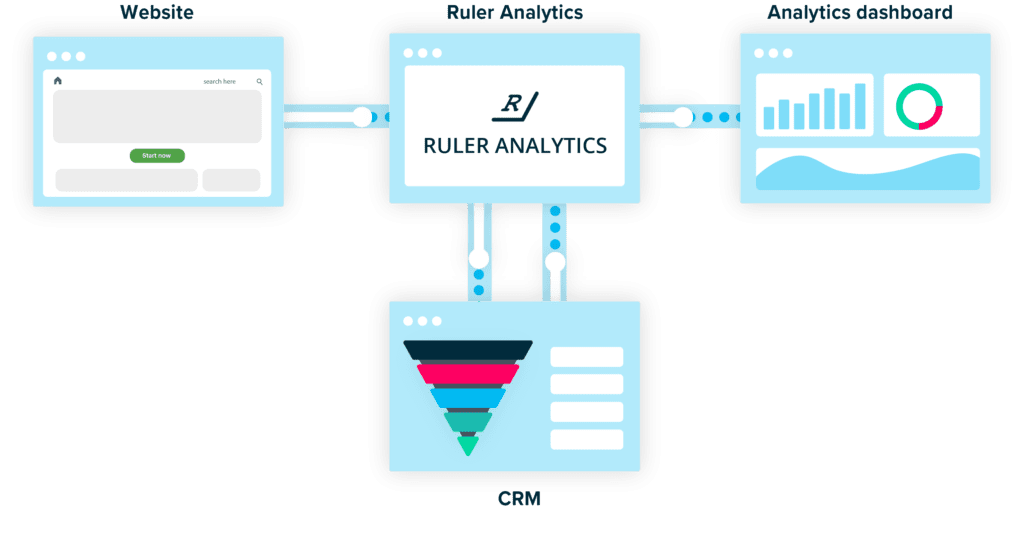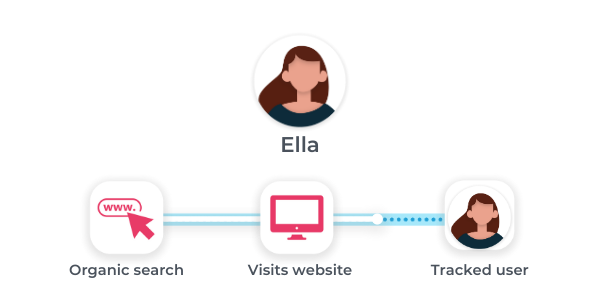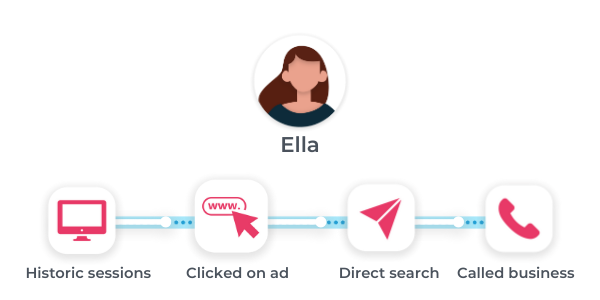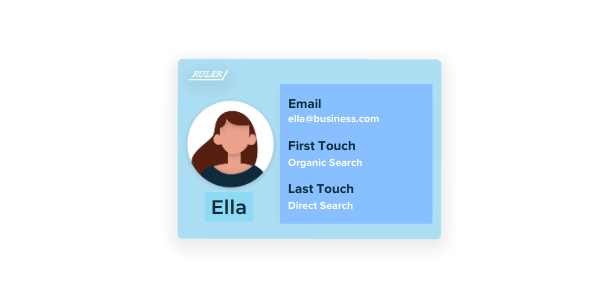Generating leads for your law firm is no walk in the park. But we’ll walk you through some key statistics to keep in mind, plus how you can use data on your existing leads to help you drive new ones.
Struggling to generate more leads for your law firm? Competition is steep and prospective clients are overwhelmed with choices.
Standing out can be hard, but it’s not impossible.
Keep reading to learn:
That’s it! Let’s get stuck in.
Lead generation is the simple act of obtaining new, potential customers through marketing and sales channels.
For legal, there are trends on where leads come from.
While this might seem simple in practice, there are a few barriers in the way of marketers working in the legal space:
Legal isn’t an eCommerce service. Prospective clients have to contact legal practices to find out more about their services and see if they have a valid claim.
As such, leads generally will come from sources like phone calls, form fills and maybe even live chat.
The issue here is that these methods of conversion are sometimes difficult to track.
Form tracking is probably the easiest method to track, but on the face of it, the only data you’re getting is lead volume.
Related: 3 easy ways to track form submissions
Let’s use an example.
You set up basic form tracking to count every time a form is filled in on your website. 100 leads fill that form, but while you have the data they submit to your form, that’s all you have.
You can’t see, what service they’re interested in, how likely they are to convert, what they’ve engaged with on your site previously or what channel they’ve come from.
This poses a lot of issues for your marketing team because they can’t differentiate between leads.
And the same is true for phone calls and live chat, but with the added issue that even just basic tracking is difficult.
Phone call tracking is hard to set up, and is often inaccurate. Every inbound call you receive won’t be a lead. It could be a previous client.
Challenge one is differentiating between leads and general enquiries so that you can effectively track leads on-site.
Since you have no way to track your leads, you’re also going to struggle to prove any form of return on investment.
Let’s say a lead, Sara, comes to your website and converts into a lead.
You only have basic form tracking so you can see that she’s converted, but you can’t see where she’s come from.
So, when she closes into a sale, you have no information to push back. You can’t connect her closed revenue back to the influencing channels.
Not every marketer will see this as a challenge, but for us, it is.
How do you know what channels are having an impact, if you can’t connect any of your data together?
Following on from this, comes lead quality.
Let’s say you generate 100 new leads. That doesn’t mean you’re going to generate 100 new customers.
Without deeper data, you can’t see that 50 of those leads come from Google, 20 comes from Facebook and 30 come from email.
What’s more, you can’t see that 80% of leads from Google convert into customers, 100% from email convert but just 10% from Facebook close into revenue.
Without this data, you can’t make any data-driven decisions. So you might think that Facebook is working and add more budget.
But we know it’s not generating high-quality leads.
When you’re not tracking your lead quality, you’re going to struggle to be competitive on key channels.
For the legal sector, Google is a competitive field and keywords can make or break your campaigns.
With the proper data in place, you can pinpoint which keywords are driving revenue, and which aren’t, meaning you can be super-targeted with your budget to drive highly-efficient adverts.
Our conversion benchmark report analysed thousands of data points across our legal clients.
Across all channels, law firms saw conversion type split to 61% by call compared to 39% by form submission.
67% of legal leads generated by PPC campaigns came through by call, while 33% came through by form.
Meanwhile, less than 20% of legal leads generated by paid social media came through by call, compared to 80% by form.
Pay per click had the largest percentage share of all traffic, at over 57%.
For conversions, email had the highest conversion rate at almost 4.5%. Organic search was a close second with a conversion rate of 4.2%.
Meanwhile, social media channels had the worst conversion rate at just 1.6% averaged across LinkedIn, Facebook, Instagram and Twitter.
⚡️ Pro Tip
We analysed the average conversion rates specifically for the legal sector, so we could better understand which channels and conversions work best for your business.
Download the legal conversion benchmark report.
These stats will get you some of the way when it comes to optimising your marketing efforts for lead generation.
But the best way to continually improve your marketing to drive more legal leads is by using your own data.
Here are 3 easy wins to help you boost your legal lead generation.
There are two aspects of marketing. One, is capturing demand. The other is creating it.
Do you know which channels your users reside on or how they convert?
It’s all well and good having a phone for potential clients to call. But what if they don’t want to call?
While we know from our Legal Conversion Benchmark Report that 60% of inbound conversions are calls, a massive 40% are forms. That’s still huge potential to drive high-quality leads.
And where are these leads coming from?
By understanding how users find your website and convert with you, you can start to get a sense of what does and doesn’t work.
Now, if you’re using a CRM, then there will be some form of lead tracking readily available out of the box. But, most of the time, it’s not very good.
Related: Best lead tracking tools to try
What you need is a solid lead tracking solution that can help you tracking marketing touchpoints your website visitors make from their first time on site to the point at which they convert.
⚡️ Pro Tip
We are a lead tracking solution that tracks users using cookie data on your website. We can pinpoint exactly what users engage with, and where, so that you can get smarter lead data.
Learn how Ruler tracks the entire lead lifecycle
Even better than lead tracking is revenue tracking. That’s pulling revenue data out from your CRM and connecting it back to influencing marketing channels and touchpoints.
Related: How to track revenue and forecast with Ruler
Ruler does this too.
And how it does it is simple.

Marketing attribution connects the dots between all of your marketing tools. From your website, and referring channels, to your CRM, and from your CRM to your analytics tools.
Understanding how your marketing impacts your revenue is key, particularly for those in the legal sector. By understanding which channels, campaigns and even keywords are driving revenue, you can optimise your campaigns and your budgets.
With Ruler, you can pass all of your lead and marketing data to your CRM and case management systems. You can also push your revenue data in your CRM and have it correctly attributed in your marketing tools.
This means you can assess every lead and client you get. With this data, you’ll be able to spot new trends like:
Keep reading to find out how to get started.
Counting leads and sales is one thing. But people don’t always convert directly from an advert they see.
They might view an ad on Google and come back to your website organically a week later.
These ‘ghosts’ on your website are hard to track. But there is a way around it.
Marketing mix modelling can be a great option for legal marketers as it can allow you to connect tangible changes in your website and pipeline performance to TV ads, radio ads, or even just online advertising.
📈 Pro Tip
Want to learn if impression data through marketing mix modelling can improve your marketing data? Book a demo with the team to see MMM in action.
We’ve talked a lot about Ruler. And we know, it’s a total sales pitch. But we work with hundreds of clients, many of those working in the legal sector.
So, to help. Here’s how Ruler works.
A potential client lands on your website for the first time. In this example, we’ll say she landed on your site from an organic search.
Ruler starts tracking this user, collecting her source data, and any pages she interacts with plus more useful insights.

She visits your site again after seeing and clicking on a PPC advert. However, she still doesn’t convert.
Finally, she visits again via a direct search and converts into a lead by calling your law firm.

At this point, Ruler sends all the data it holds on that user to your CRM. Your first response handlers will have all of the info on this lead right on their computer screen.

In the legal industry, cases won’t close for months, maybe years. But that’s ok! Ruler will continue to track and update the user.
After they convert and the case is closed, whether that’s three months or three years, Ruler will scrape the amount of revenue generated from that client and push it into your marketing tools and apps. There, Ruler will attribute your revenue to the correct campaigns and channels.
Generating legal leads is never going to be easy. But it can be easier. And what you need to make it easier is simple. Ruler Analytics is the missing key which will allow you to unlock vital data to drive more leads, and most importantly, more revenue.
Find out what data you can unlock from Ruler by booking a demo with our team of experts. They’ll show you how you can start connecting your data through the entire pipeline.